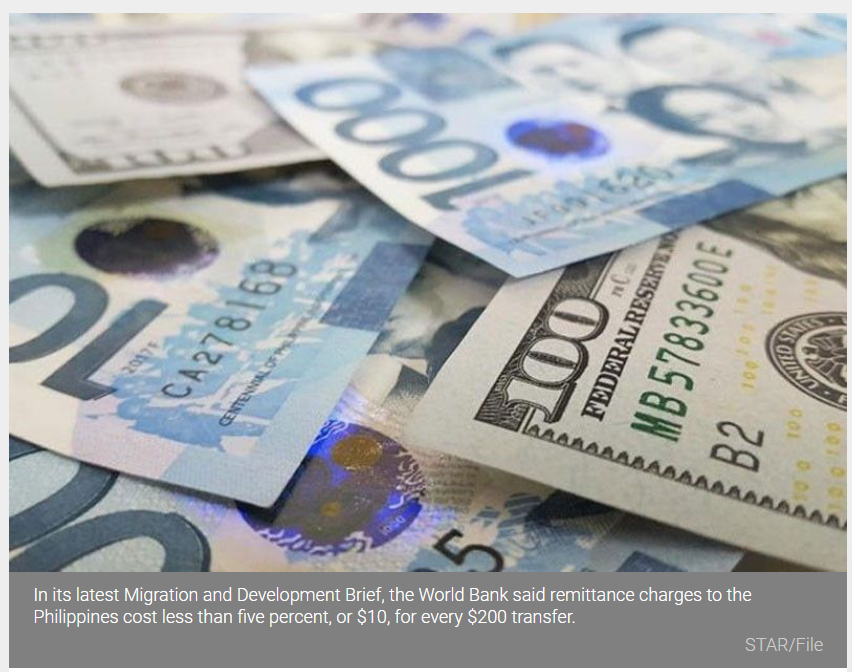Philippines remittance cost among lowest – World Bank
MANILA, Philippines — Sending money to the Philippines remains among the cheapest globally, benefiting an economy reliant on remittances sent by overseas Filipino workers (OFWs), the World Bank said.
In its latest Migration and Development Brief, the World Bank said remittance charges to the Philippines cost less than five percent, or $10, for every $200 transfer.
The Philippines maintained the lowest remittance fees in the fourth quarter of last year on money sent by OFWs from Singapore, Kuwait, United Arab Emirates and Spain.
On the other hand, the South Africa to China corridor has the highest cost for remitting cash at close to 20 percent for a $200 transfer. Thailand to China and Thailand to Indonesia came in next at roughly 15 percent, while Thailand to Vietnam and Japan to Thailand range between 10 percent and 15 percent.
Based on the World Bank report, the Philippines last year ranked fourth in the world in terms of remittance inflows with $35 billion. It trailed India’s $83 billion, China’s $60 billion and Mexico’s $43 billion, but outpaced Egypt’s $30 billion, Pakistan’s $26 billion and Bangladesh’s $22 billion.
Inside East Asia and the Pacific, the Philippines placed second next to China, and stayed ahead of Vietnam’s $17.2 billion, Indonesia’s $9.7 billion and Thailand’s $8.3 billion.
As a contribution, remittances made up 9.6 percent of the Philippine economy to come at fourth behind Tonga, 37.7 percent; Samoa, 18.7 percent and Marshall Islands, 13.2 percent.
On a regional scale, remittances to East Asia and the Pacific, where the Philippines is situated, declined by almost eight percent to $136 billion last year, but the World Bank expects this figure to grow by up to 2.1 percent this year on the recovery of host countries, particularly Saudi Arabia, UAE and the United States.
However, sending nations may struggle to supply the host economies with workers due to travel restrictions applied to contain the spread of the virus. Further, governments are expected to limit the exit of health workers to fill their own gaps on the medical front.
According to the World Bank, the Philippines brought down its overseas deployment by as much as 75 percent last year. The decline was attributed to, among others, the outbound cap of 5,000 yearly on health workers to ensure that the country keeps enough medical respondents within to carry out pandemic duties.
In February, the Bangko Sentral ng Pilipinas said remittances managed to defy the odds by slipping less than a percent to $33.19 billion in 2020, from $33.47 billion in 2019.
Around 40 percent of the remittances were sent by OFWs from the US, followed by Singapore, Saudi Arabia, Japan and the United Kingdom.
Source: https://www.philstar.com/business/2021/05/14/2098030/philippines-remittance-cost-among-lowest-world-bank


 English
English




